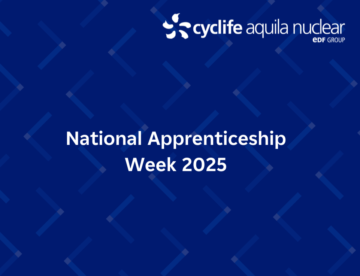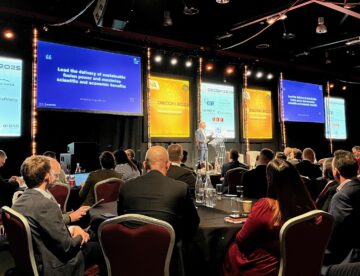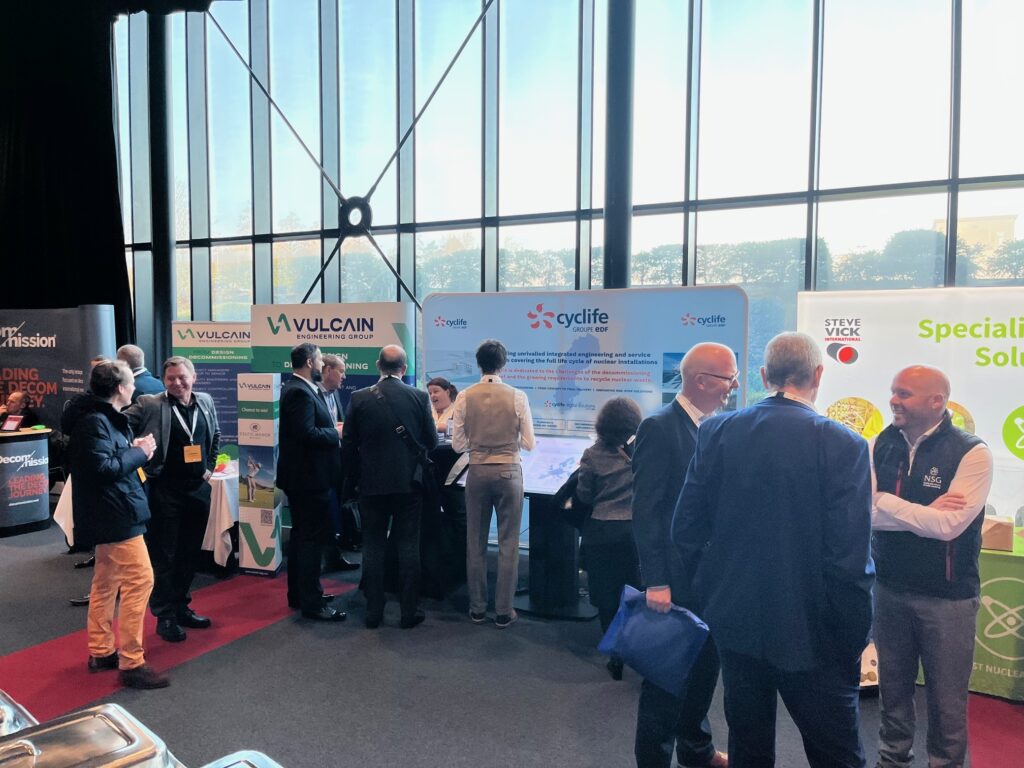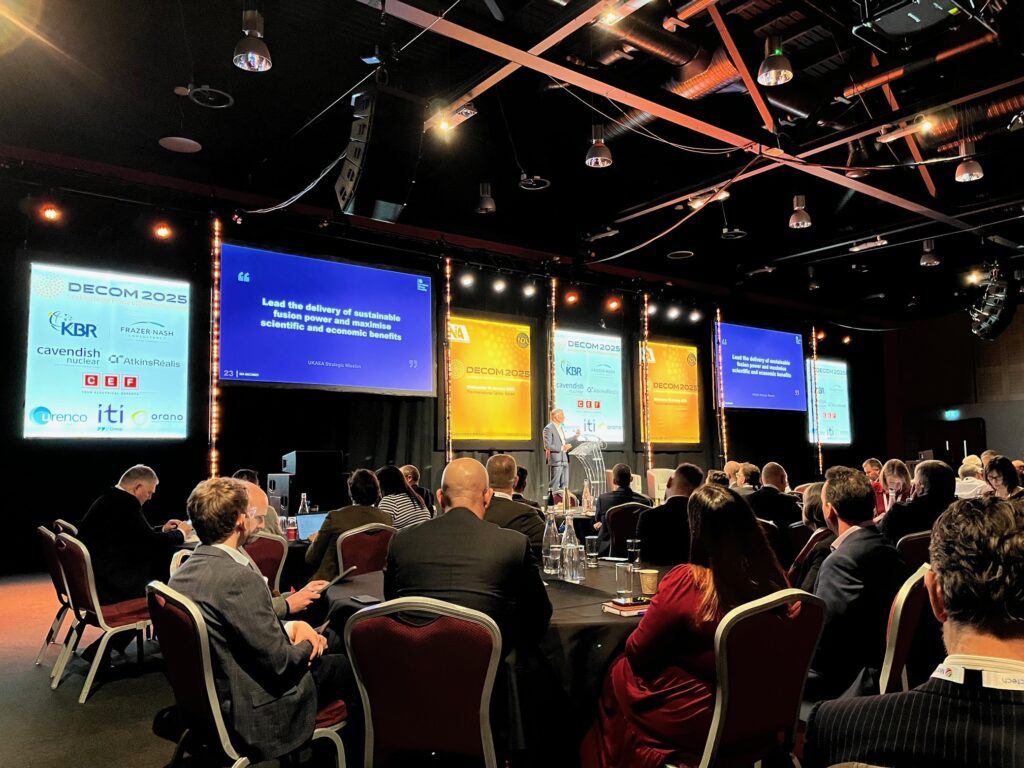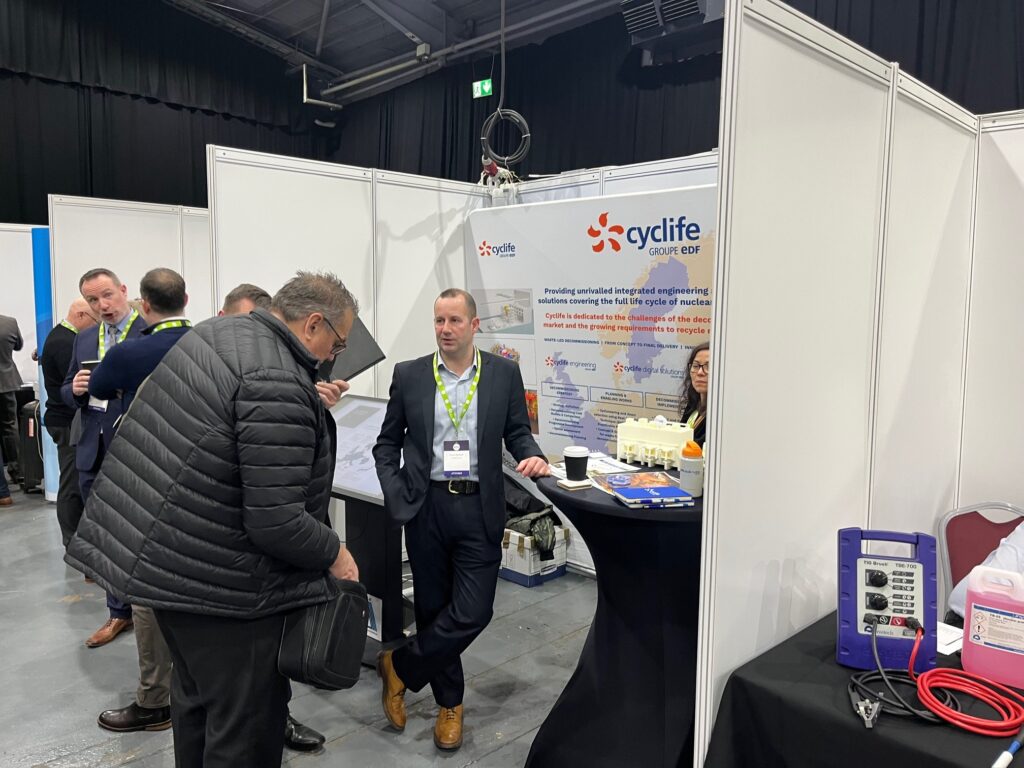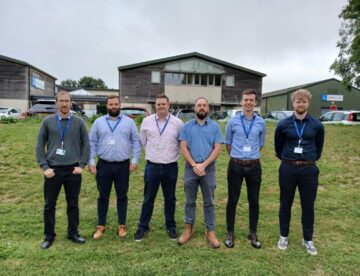Today we recognise the talent, achievements, hard work and influence of women around the world. At CAN we are committed to supporting an inclusive workplace where women are empowered, valued and respected. We are incredibly proud of all the talented & successful women within our business and their dedication to their careers.
We asked a few of our colleagues what advice they would give to someone considering a career in their department…
 Liz Wheeler, Finance Director
Liz Wheeler, Finance Director
Go for it! There are many different avenues to take when considering a career in Finance, CIMA, ACCA, Taxation etc. I started by enrolling in AAT (Association of Accounting Technicians) on a modern apprenticeship. I enrolled as soon as I had finished sixth form college and was able to complete my studies whilst working full-time.
Following my completion of AAT, I was given the opportunity to become Finance Manager at a new company, Cyclife Aquila Nuclear. As my role in the new business grew, I wanted to further my qualifications by using the knowledge I was applying in everyday work to obtain a Chartership in Accounting. The CIMA qualification (Chartered Institute of Management Accountants) allowed me to apply knowledge used every day whilst learning about many more areas of business. A career in finance can be incredibly rewarding and offers numerous opportunities for growth and development. It’s important to stay determined, seek out mentors, and build a strong support network. Remember, every challenge you face is a step towards your success. So, embrace the journey, keep learning, and believe in yourself.
 Dr Nara Ringrose, Head of People & Organisational Development
Dr Nara Ringrose, Head of People & Organisational Development
The most critical principle is constant learning from experience. Whatever you do, give it your all. Resilience and pure knowledge in HRM subjects are the most demanded qualities for an HR professional. It is beneficial to support your knowledge by learning about various industries and business trends outside of HRM. Finally, in the world of AI, the ability to stay genuine and approachable is invaluable.
 Emma Downey, Marketing Manager
Emma Downey, Marketing Manager
Marketing is such an exciting and varied job I’ve been doing it for over 12 years and still love it! Whether you are an introvert or extrovert, data focused or more creative, love designing or writing, you will find a role within marketing that aligns with your values and passions. I’d probably always suggest two main things: spend time in an agency; they’re have a great atmosphere, and you get to work on various brands and projects, which will allow you to figure out what you enjoy.
Secondly, find a great mentor or network of fellow marketers, this has been invaluable to my career, building my confidence, offering more opportunities outside of job roles and strengthening my skillset.
If you’re interested in a career at CAN, visit our job vacancies here: Vacancies – Cyclife Aquila Nuclear | EDF Group
This week we are celebrating National Apprenticeship Week!
Apprenticeships are a fantastic way to gain hands-on experience, develop valuable skills and start a successful career. At CAN, we pride ourselves on our fantastic apprenticeship programme, which gives people a chance to work towards a career in Engineering. We aim to onboard two apprentices every year.
The Engineering Design and Draughtsperson Apprenticeship takes four years to complete. The apprenticeships begin in September with a BTEC Engineering Diploma. In the first year, the apprentices will undertake full-time training at Southampton Engineering Training Association (SETA). Once they pass the first year, their second and third year will include a combination of learning. They will learn the Engineering Standards at SETA, carry out work-based learning at CAN and pursue further education, working towards their Higher National Certificate (HNC) and Higher National Diploma (HND) in Mechanical Engineering.
In their final year, they will complete their Engineering Standards, carry out work-based learning at CAN and continue with further education. Once completed, they will be promoted to an Assistant Mechanical Design Engineer and finally a Mechanical Design Engineer.
We spoke with Charlie Collings and Fred Wood, two of our former apprentices, they share their experiences from when they were apprentices:
 Charlie Collings
Charlie Collings
“I completed my HNC and HND in General Engineering during my 4-year apprenticeship at CAN, working in the office for four days and a day release for one. This time spent on site allowed me to develop valuable skills and knowledge from the team whilst working on a range of projects, complementing my HNC and HND learning and development.”

Fred Wood
“Cyclife Aquila Nuclear has supported my growth as an engineer throughout my time with the company. As an apprentice, I was offered many opportunities for professional development; this included a business-funded degree in mechanical engineering in which CAN supported me in studying part-time alongside my work. I’m grateful for the investment the business has made into my development.”
Both Charlie and Fred completed their apprenticeships in 2023 and are now fully qualified Mechanical Design Engineers.
We are incredibly proud of all of our apprentices and the hard work and dedication that they have shown to develop their careers. At the end of last year, we onboarded two new apprentices, Ben and Kai, who have started their journey towards a career in engineering. You can visit our apprentice page to learn more about our apprenticeships: Apprenticeships with CAN – Cyclife Aquila Nuclear | EDF Group
You can also view our apprenticeship video here, where Charlie and Fred give their advice to anyone considering an apprenticeship at CAN: National Apprenticeship Week Video
Our tendering team is an integral part of our business. They are responsible for winning new business, identifying opportunities and presenting them to internal stakeholders. They also respond to requests for information and coordinate input from engineering, sub-contract partners and internal departments to produce the most compelling bid response. Each member of the tendering team will manage a tender however, they work together so that the responses are comprehensive and to a high standard which provides a great opportunity to learn from each other. They are always reviewing their processes to improve ways of working and develop their strategy. The team is made up of our three Senior Proposal Engineers, Dave Collings, Daniel Pettinger, and Iain Moore.
We asked each of them to tell us about their role:
 Dave Collings
Dave Collings
“What I love is that the role requires us to exercise a wide range of skills and technical knowledge while also collaborating with subject matter experts from across the business. We’re empowered to develop long-lasting relationships with our supply chain partners to create high-quality proposals. What I really admire is that CAN invests in our professional development, meaning we’re fully supported in achieving career goals and progression. Perfect for someone proactive, driven and ready for a challenge!”

Daniel Pettinger
“I joined the company last January and it’s been a steep learning curve since my background is in tendering automated materials handling and warehouse storage systems; so, I am in a totally different world. I would say the best thing about joining CAN has been the people; the team have been really supportive, and everyone pulls together to reach our common goals. On a day-to-day basis the role is quite varied, the most important part of the role is taking ownership of the end-to-end tendering process in order to bid for new business, this requires pulling together input from a variety of different departments and internal experts, engaging with our supply chain, and no two tenders are truly alike; there are different phases to the tender process and because CAN are designing bespoke engineering solutions across a range of nuclear sectors, our offering is always unique.”
 Iain Moore
Iain Moore
“I joined CAN in January 2024 as a Senior Proposals Engineer. This role introduced me to the nuclear industry as I have previously worked in the Rail, Defence, and Oil and Gas industries. A key part of the role involves managing the tendering process from opportunity identification/assessment through to the proposal submission. A typical day can include liaising with customers and supply chain, identifying/assessing opportunities, planning/developing proposals, collaborating with in-house experts to create proposals tailored to each customer and their unique requirements. I really enjoy the role as each opportunity has a different set of challenges that not only keeps things interesting but also promotes personal and professional growth.”
Last week, CAN attended Nuclear Industry Association’s DECOM25 event and the Nuclear Decommissioning Authority’s (NDA) Supply Chain event!
Our team joined representatives from Cyclife and Cyclife UK and exhibited at the two events, showcasing our comprehensive capabilities in nuclear decommissioning, defence, science-based projects, and power generation.
The event provided valuable networking opportunities with NDA group companies and key decision-makers. We gained cross-sector insights from JET, Oil & Gas, AWE, and Space decommissioning projects and learned about the latest developments in digital innovation and robotics for enhanced safety.
As a key supplier to the nuclear industry, Cyclife Aquila Nuclear’s presence at both DECOM2025 and the NDA supply chain event reinforced our position as a vital partner in nuclear decommissioning, defence, science-based projects, medicines, and power generation. Our exhibition presence at both events provided valuable opportunities to showcase our capabilities and engage with current and potential clients.
Key highlights from the events include:
Industry Updates and Opportunities
We gained firsthand insights into NDA group updates and strategic direction, an understanding of upcoming decommissioning projects and supply chain opportunities, and exposure to digital technological innovations shaping the industry’s future.
Cross-Sector Learning
We acquired valuable insights from parallel industries facing similar decommissioning challenges and were able to gain a greater understanding of emerging technologies and methodologies that could enhance our service offering.
Strategic Relationships
During the conference dinner (sponsored by KBR and Frazer Nash Consultancy), we formed relationships with decision-makers and potential clients and strengthened relationships with existing clients.
Future Focus
At both events, we saw the industry’s future plans, including digital capability development and robotics applications for enhanced safety and efficiency, an understanding of workforce development needs and skills requirements, and knowledge of upcoming opportunities in front-end nuclear expansion.
Exhibiting at these interconnected events demonstrated our commitment to the industry and reinforced our position as a trusted supplier across the nuclear sector. The events provided an excellent platform to showcase our expertise while gathering valuable market intelligence to inform our future service delivery and business development strategies.
At the end of 2023, we were awarded a significant contract to design and build a facility to manufacture radioactive power cells to provide a vital source of energy for future space missions. The production process will be housed in a high integrity glovebox suite to ensure the highest levels of safety and cleanliness.
What is a glovebox?
Gloveboxes are containment systems. Their purpose is to protect operators and the wider environment from a potentially harmful material and to protect the material from potential contamination from operators or the outside environment.
An example of both scenarios occurs in the field of nuclear medicine for the production of radioisotopes for diagnostics and therapy in cancer treatment. In the case of nuclear medicine production, the operators must be protected, while the product inside the glovebox must be manufactured in a sterile environment. Gloveboxes and containment systems are used throughout the nuclear and pharmaceutical industry.
NNL programme of work
The UK Space Agency and National Nuclear Laboratory (NNL) are to collaborate on the world’s first space battery powered by Americium-241.
NNL’s work, commissioned and funded by the UK Space Agency, will be delivered in a new £19 million laboratory in Cumbria equipped with next-generation equipment and technology. It will deliver a sovereign supply of fuel for space batteries in the context of a global shortage, enabling the UK and its partners to pursue new space science and exploration missions.
Atomic space batteries, also known as Radioisotope Power Systems (RPSs), release heat as the radioactivity within them decays. The heat can be used directly to prevent spacecraft from freezing and it can be converted into electricity to power onboard systems. The batteries go on working for decades, without need for maintenance over the many years in which a spacecraft could be travelling.
National Nuclear Laboratory – a look at our Central Laboratory – https://youtu.be/d67TxfPzls0
About NNL
As the UK’s national laboratory for nuclear fission, NNL is harnessing nuclear science to help solve some of the world’s biggest challenges. NNL’s work is channelled into four strategic areas: Clean Energy, Health and Nuclear Medicine, Environmental Restoration and Security and Non-Proliferation. These four Focus Areas are the cornerstones of NNL’s ambition, shaping what it delivers to customers and for UK society, and how it invests in our future. At a time when society is waking up to acting on the environmental crisis our planet faces, it is impossible to overestimate the scale of the challenge ahead for the UK in reaching net zero by 2050. Without nuclear, the UK will not meet this target on time. And without NNL’s work, the UK nuclear sector cannot deliver what is required. NNL is custodian of a unique set of facilities and capabilities that enable groundbreaking nuclear research and development – including four world-leading laboratories in the North West of England. The most important asset for NNL’s future success, however, is its people. NNL is fortunate to be gifted with some of the most creative and inspired scientific minds in the nuclear sector, in the world. Everyone in NNL’s workforce is here to deliver environmentally and financially sustainable solutions to the major challenges of the 21st century, with the support of customers and partners in government, academia and the supply chain.

© Cyclife Aquila Nuclear – CAN NNL Glovebox Team




